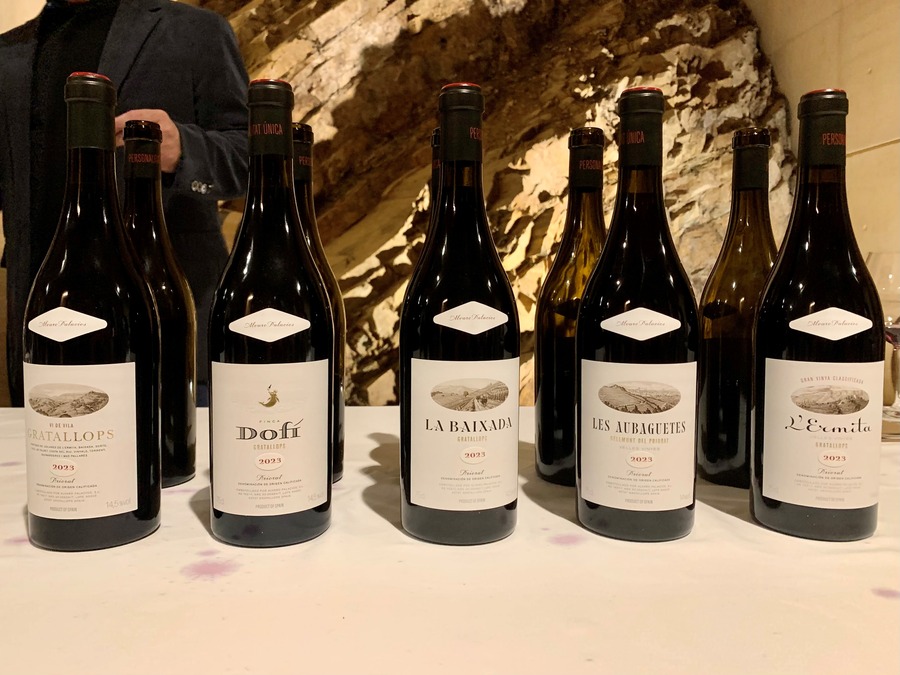
Álvaro Palacios is arguably the leading figure in the winemaking revolution that took place in Spain in the 1980s. Energetic and passionate, Palacios admires Burgundy and other wine regions with a monastic past. A media-friendly maverick, he has become a true celebrity in the world of Spanish wine. He is currently in charge of a small wine kingdom which produces some of the best labels from Bierzo, Rioja and Priorat.
Born into a wine family in Alfaro (Rioja Oriental), he soon disagreed with his father over the way of doing things at Palacios Remondo. He thought it was far more attractive to join a crazy bunch of people (René Barbier, José Luis Pérez, Carles Pastrana and Daphne Glorian) who had just discovered Priorat, a beautifully rugged region located in an isolated backward hinterland. As the youngest in the group, Álvaro was nicknamed “the dolphin”. He famously shared winemaking facilities and equipment with his colleagues so that each member bottled his wine under his own brand. Álvaro's wine was named Clos Dofí, hinting at his monicker (Dofí means dolphin in Catalan).
This was the start of a new Priorat model which turned to international grape varieties, specially Cabernet and Syrah, to support the local Garnacha and Cariñena grapes aged in new French oak barrels. The style caused a frenzy in the US and Switzerland, due in no small part to Robert Parker's influence. The wines were dark, powerful and concentrated and showed a distinct minerality that bespeaks the slate soils in the region. With this base and considering that markets unreservedly accepted the steep prices from the very beginning, Palacios built his range of wines.
They include the entry-level Les Terrasses (€40 in Spain, around 100,000 bottles); his original label, later renamed Finca Dofí (€105, 25,000 bottles) which comes from a 10-hectare vineyard located in Camp d'en Pique, La Baixada and Coll de Falset with various aspects; and his top wine L'Ermita (€1,300, just over 4,500 bottles). This legendary label comes from a 1.4 hectare plot planted with 84 to 104 year-old vines. It lies on a steep slope which climbs from 350 metres to 430 and is crowned by a shrine (ermita, in Catalan). It was the first wine to qualify as gran vinya classificada (the equivalent of a grand cru) in the 2017 vintage.
Things have changed considerably in recent years. The creator of the most expensive wine in the appellation opened the market for affordable Priorats with the launch of Camins del Priorat in 2007 (€24, over 200,000 bottles) a fresh and fruity red with only eight months in oak. Priorat was on track to become a well-known wine region.
Back to local grapes
Gratallops (€65, around 15,000 bottles) was born around that date. It belongs to the new “Vi de la Vila” (Village Wine) category, the first serious attempt in Spain to mark territorial boundaries and define the style of village wines within the DOQ Priorat. Made exclusively with local varieties (Garnacha and 20% Cariñena), it offers an airy, aromatic style which conjures up a Mediterranean landscape of rockrose and rosemary.
Other wines in the range are imbued with the same style, specially Finca Dofí which is now almost 95% Garnacha and 5% Cariñena. L'Ermita followed the same style with the amount of Cariñena rising since the 2014 vintage. A small amount of white grapes (Garnacha Blanca and Macabeo) barely representing 1% is also blended in their reds.
The latest releases are two single-vineyards under the Vinya Classificada category. Les Aubaguetes (1,200 bottles, around €530 in Spain) was first relased in the 2015 vintage. Grapes are sourced from a north-oriented plot in Bellmunt del Priorat planted to over 100-year-old vines. The grapes, two thirds Garnacha and one third Cariñena plus some white grapes, used to be blended in Les Terrasses. La Baixada (3,500 bottles, €280) is a plot formerly destined for Dofí (some of which still goes into the blend) but produced separately since 2018; the emphasis is on Garnacha, although it also contains 5% Garnacha Blanca.
The current Priorats made by Álvaro Palacios are clearly finer and less structured, more expressive and drinkable from the moment they arrive at the market.
Most popular
NEWSLETTER
Join our community of Spanish wine lovers


